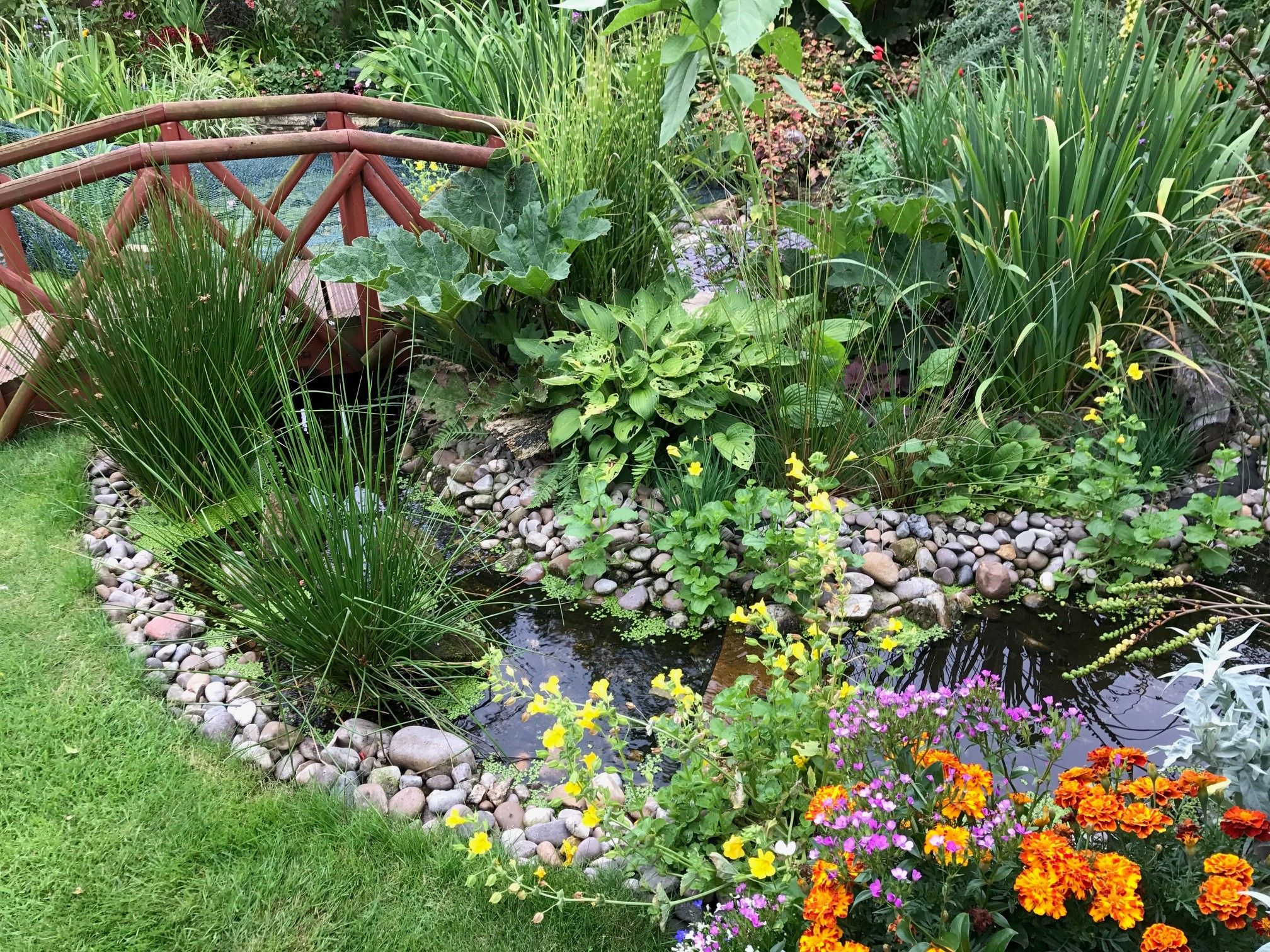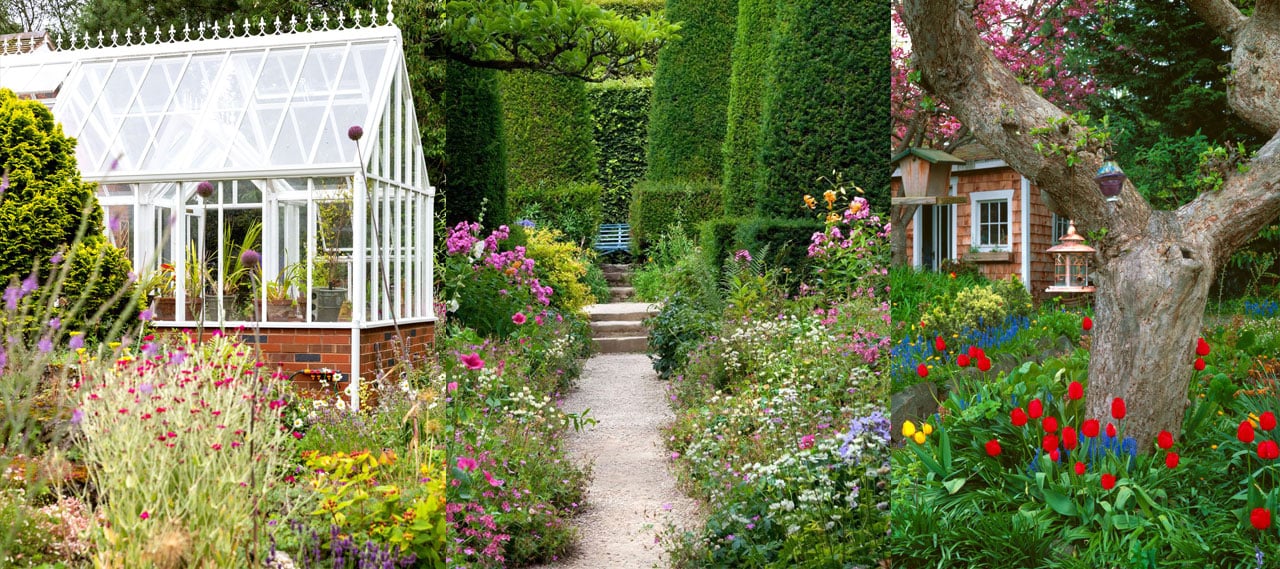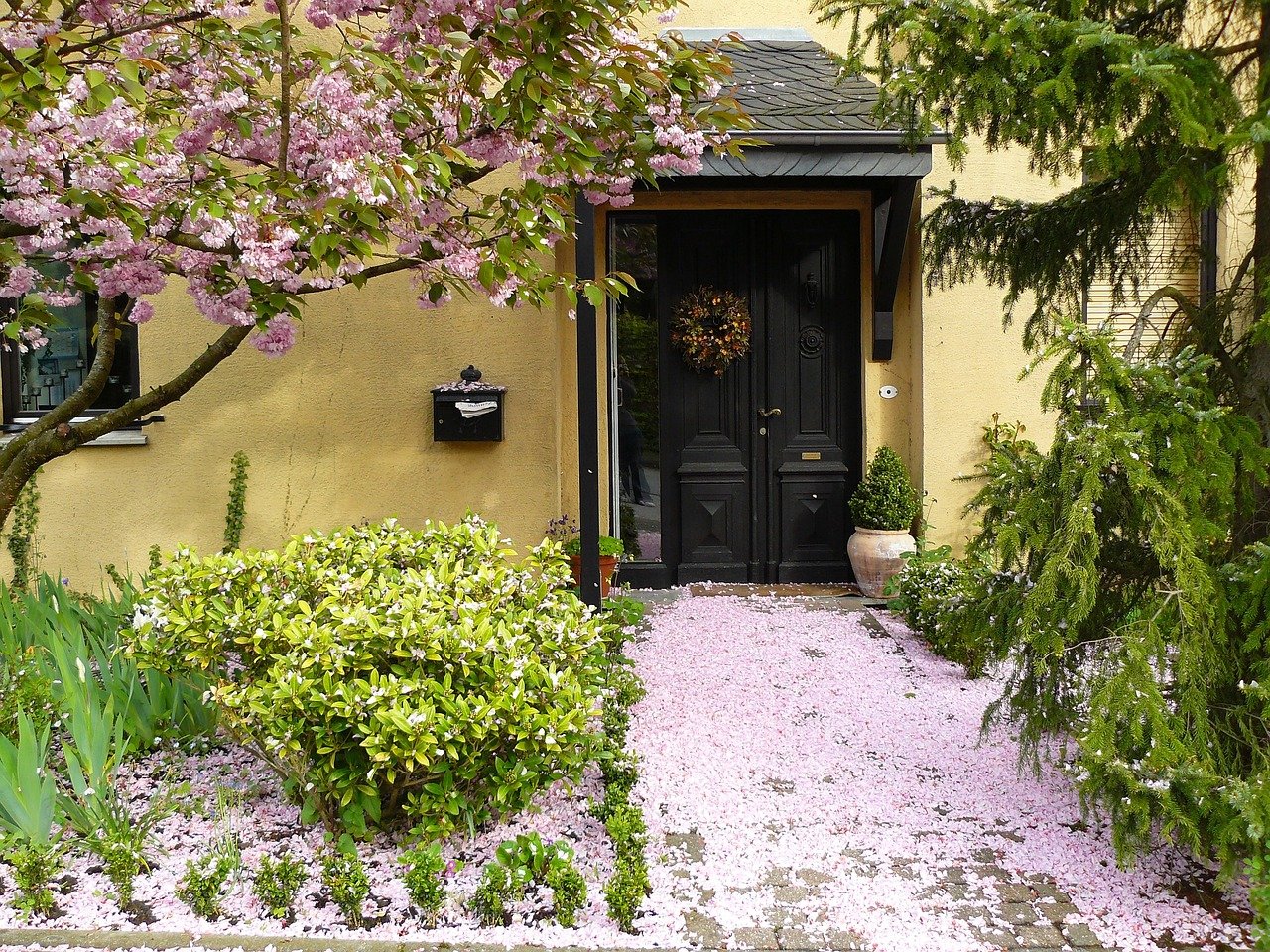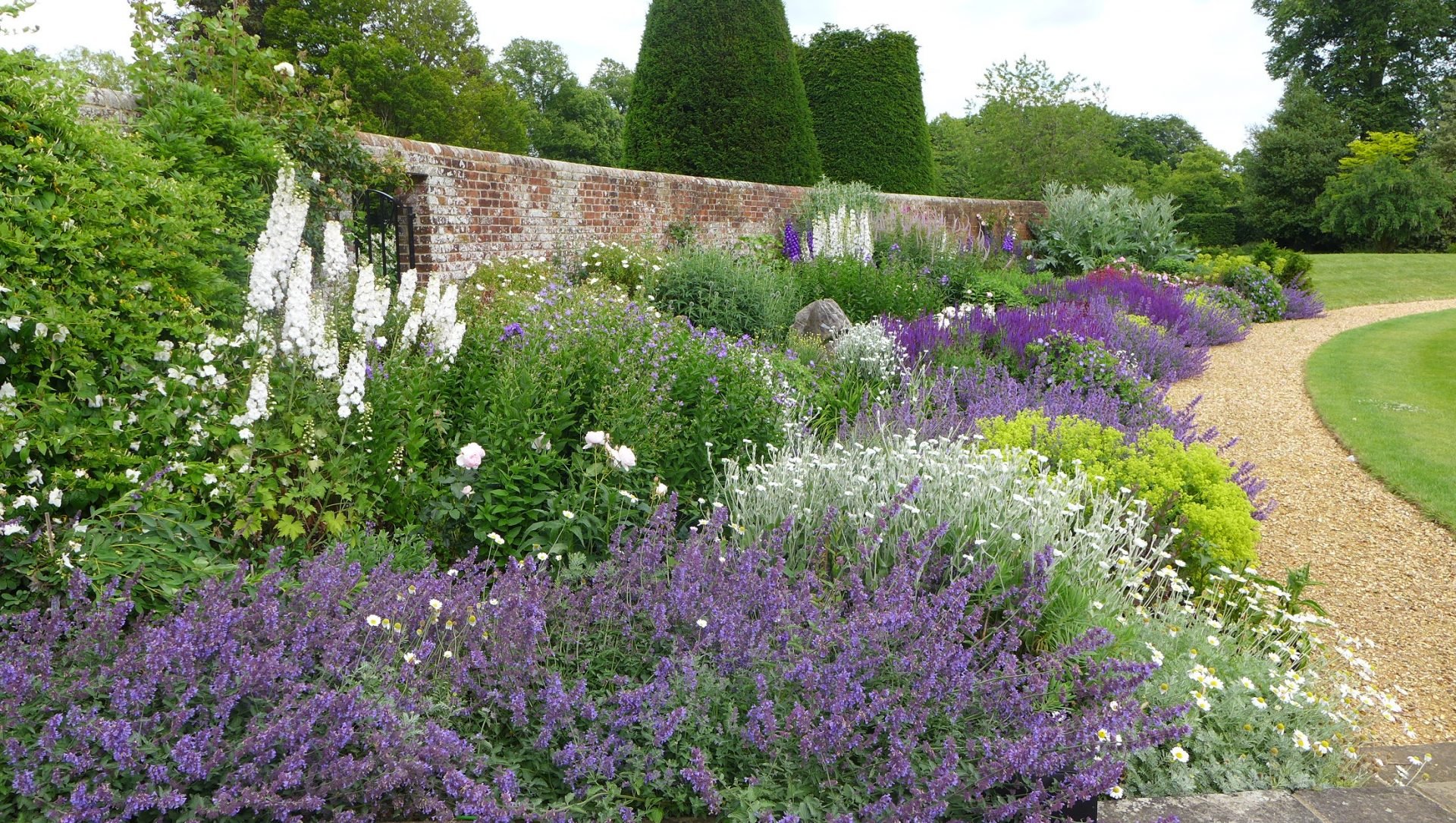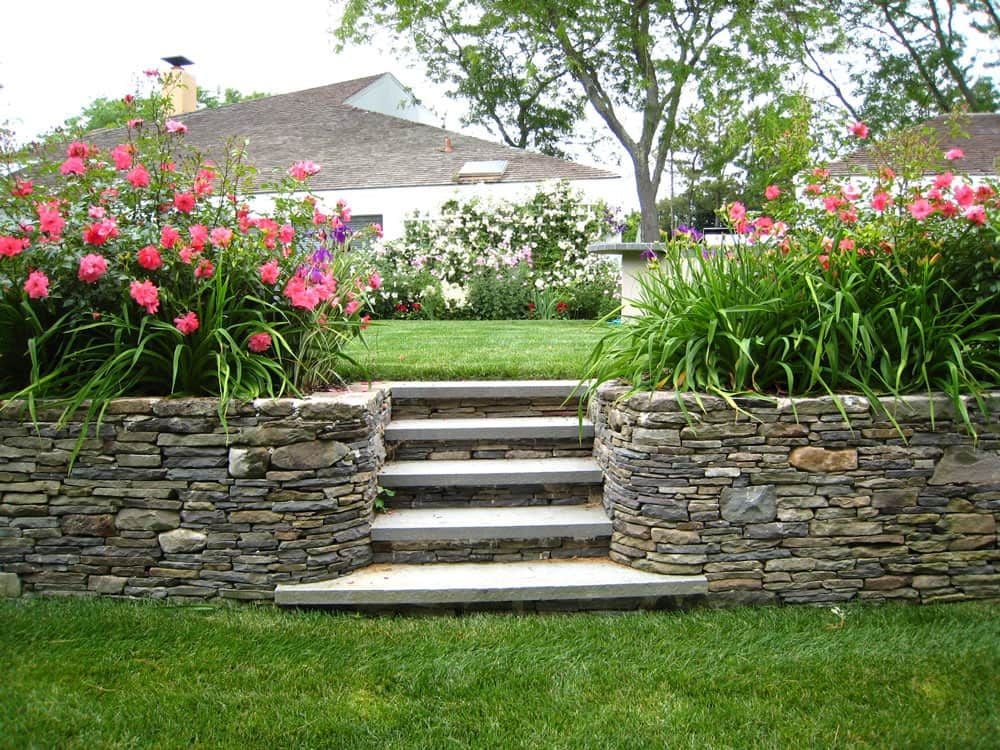Expert Guide: Designing Your Own Espalier Fruit Tree Screen
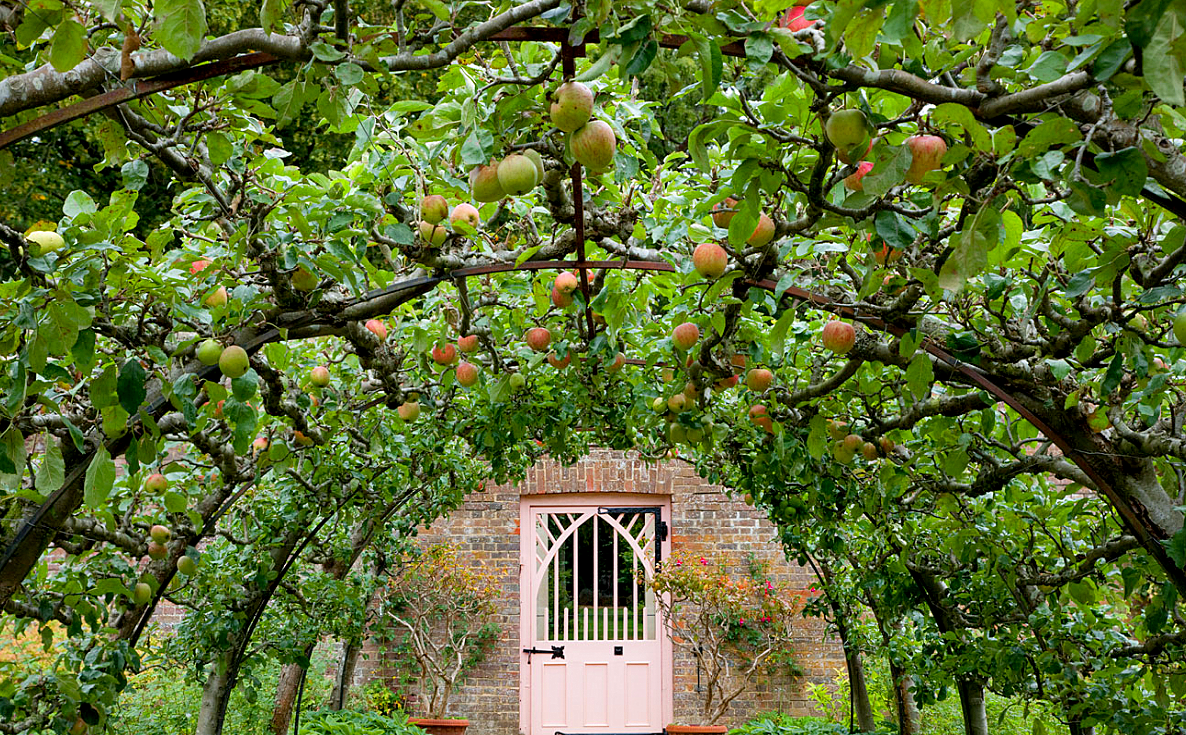
Table of Contents
Gardening is a skill, but have you ever thought that you could use your artistic skills to grow fruits while giving your garden an enchanting look? Yes, you can! Espalier technique is where horticulture meets art, nurturing the trees of your choice to form a living sculpture that bursts your garden with grace and beauty.
In this blog, we are going to walk you through the process of planting and all you need to know about Espalier. From creating your own pattern to harvesting healthy and tasty fruits, Espalier is the most rewarding experience for gardeners. There is a wide range of fruit trees that can be easily trained to grow in the desired pattern.
What is Espalier?
Espalier is an ancient agricultural practice of growing plants by pruning and training the branches to grow in a certain structure. These trees are frequently grown against a wall, fence, trellis, or any flat structure that can support the tree.
During the 17th century, the Espalier technique was originally adapted from the Romans and was considered to be an art form by Europeans. This technique was widely used to grow plants and fruits on courtyard walls without disturbing the garden space and also to decorate walls. The most common and well-known example of the Espalier technique is the vineyard.
Certain plants adapt the Espalier technique very quickly, and some plants need to be pruned and trained to acquire a structure. Fruit trees like Orange, Lemon, Peach, Plum, Pear, and Apple, and flowers like Jasmine, Camellia, and Gardenia can be easily trained.
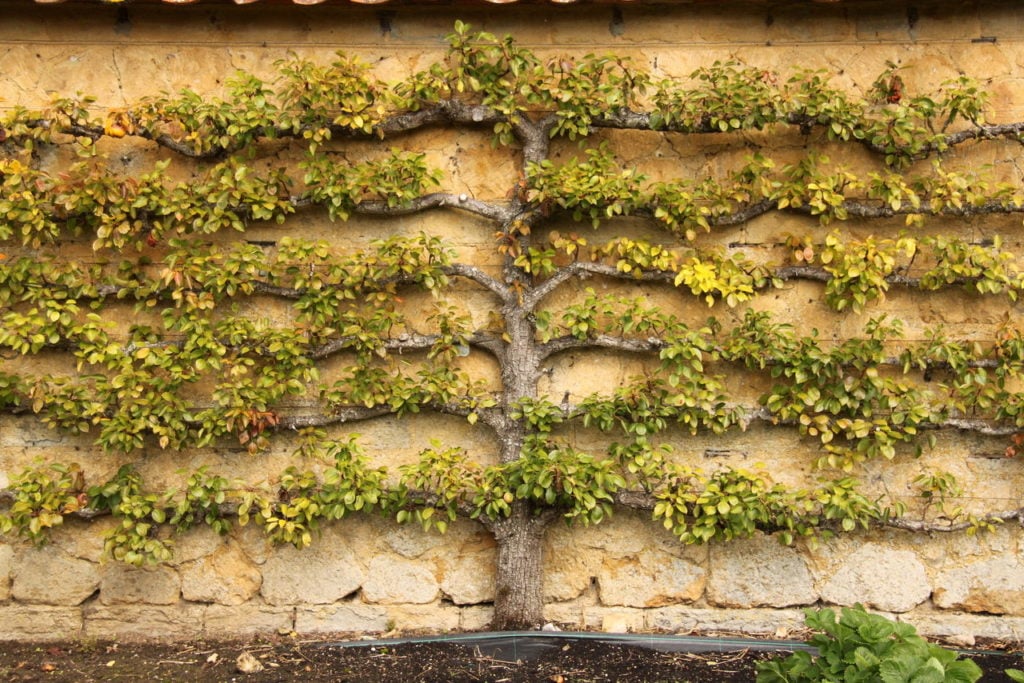
What is Espalier Fruit Tree Screen?
To create a productive and beautiful garden that produces fruits, the Espalier screen is a perfect technique. Over hundreds of years, many traditional and formal patterns were developed, but in recent times gardeners have developed many modern designs to enhance the beauty of the garden. The traditional designs involve patterns like V -Shape, Belgian fences, Horizontal T, Cordon, Palmette, etc. If you want a unique and rustic pattern, choose a dead or stunted leafless tree and train the plant to grow on it, which adds a very interesting character to the structure.
Other than saving space, espaliered trees bear more fruits for a longer time when compared to untrained trees. A well-trained espaliered tree concentrates its energy on fruit production, and it also helps gardeners focus on overall tree development. Due to healthy air circulation, the espaliered trees produce healthier fruits.
Espaliered trees are a very pretty art that enhances the bare wall, and it looks beautiful in any season.
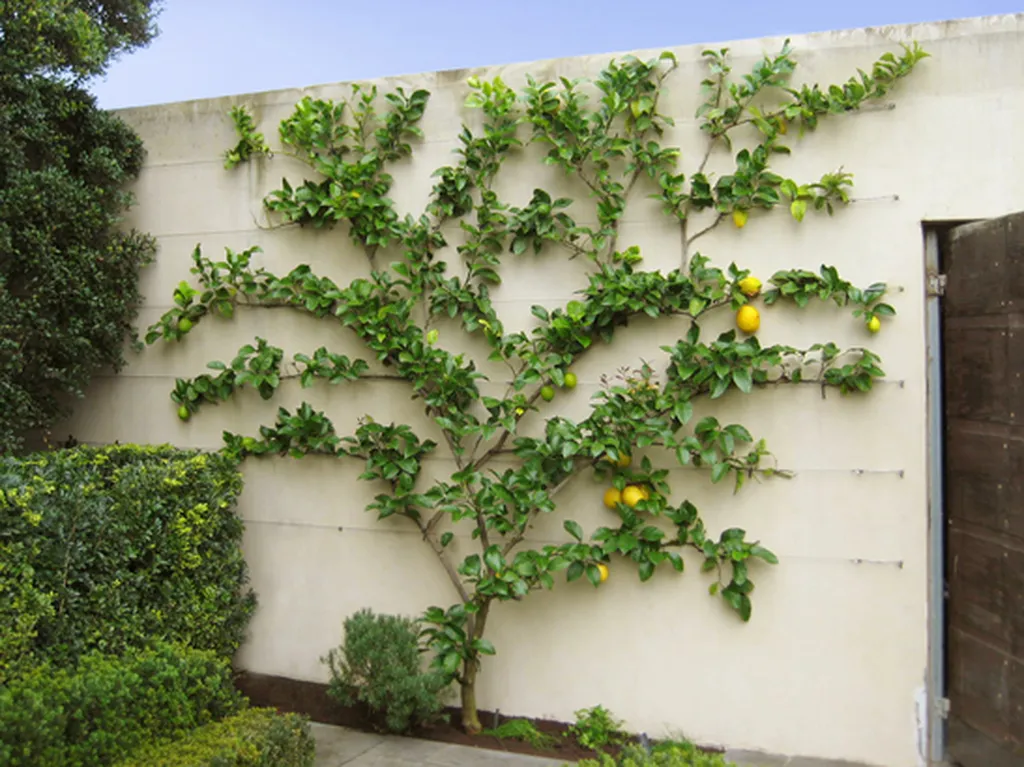
How to Create an Espalier Fruit Tree Screen
With a little effort and patience, you can create an Espalier tree screen that helps the tree produce healthy fruits. Let’s see how to create an Espalier screen!
1. Preparing the Soil
For an Espalier to develop well, it is important for the root system to be strong. The better the soil, the better the plant sets itself to adapt to the structure. Make sure to feed the soil with all the nutrients and organic matter; you can also use liquid fertilizers with a well-fertilized potting mix that is available in the market.
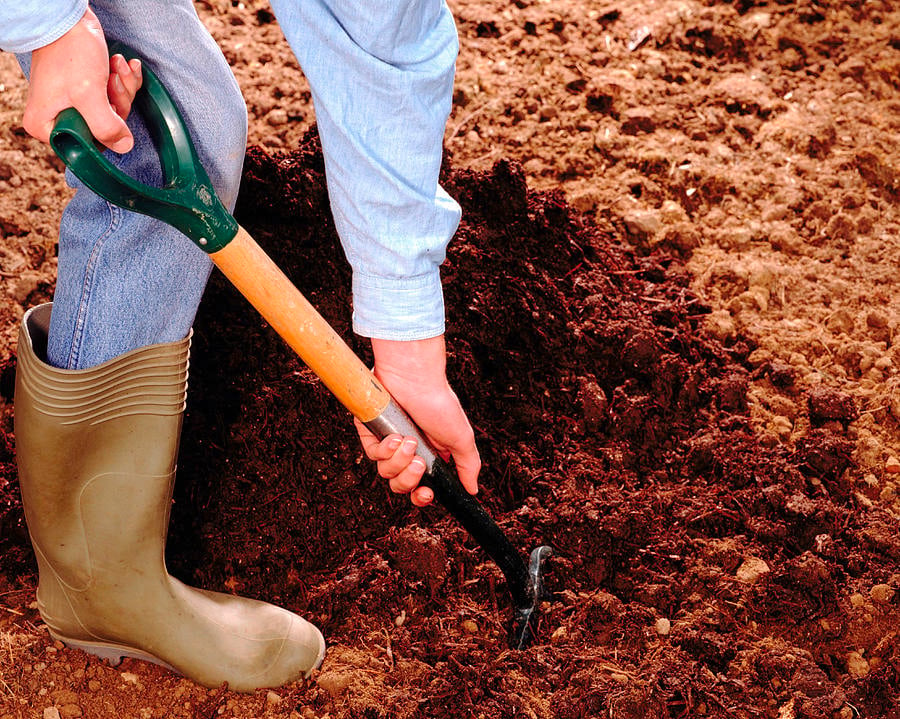
2. Choosing the Position of The Espalier
Espalier fruit trees are good to go against any wall or fence, but the positioning of the wall is important for the healthy growth of fruits. Select the wall or location that has abundant sunlight; it is advised to create the screen in the southwest facing for some plants. Though most of the plants need sunlight, some fruit trees are suitable to be grown only in shadier areas, so it is recommended to choose north or east facing.
Also, choose the position of the screen based on your personal choices, like creating a private space in the garden or patio, hiding the ugly walls or bins. Espalier also helps to separate the garden by creating a room with its structure.
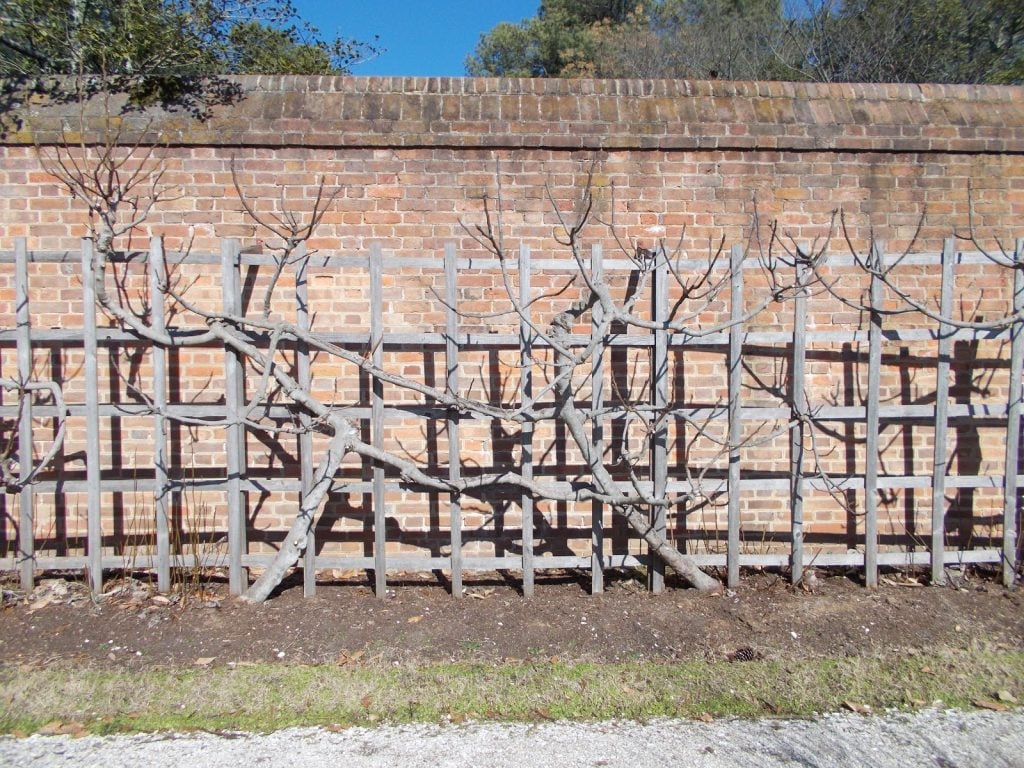
3. Choosing the Plant
It is important to choose the right fruit tree based on its position. Fruit trees like Apples, peaches, plums, Apricots, Pears, sweet cherries, etc., for a shadier position, you can choose crab apples, cooking pears, some types of plums and cherries, etc.
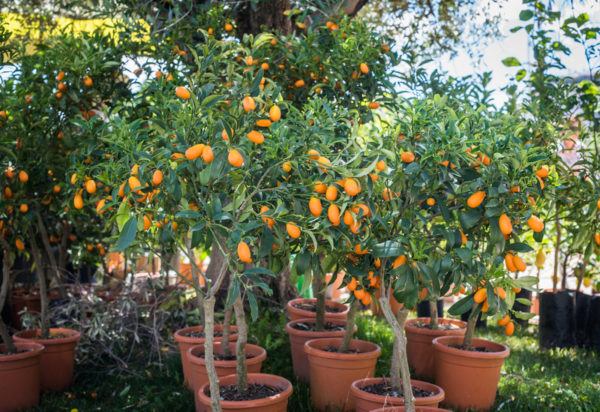
4. Choosing a Frame or Screen
Here comes your creative work to create an artful screen; for your reference, there are many traditional structures available for you to choose from, like V- Shape, fan shape, Horizontal T, Belgian fence, etc., which can be easily grown against a wall or a fence, if you want to create your own pattern, check for the feasibility of the structure based on the woody nature of the tree. You can start by installing a simple trellis or can build one with sturdy wood or metal.
To give your garden a visually appealing and interesting touch, go for patterns like a cordon, Belgian fence, fan, etc. If you choose to make it simple and easy, go for Espalier Arch or a Horizontal living structure where the tree branches out along the vertical poles.
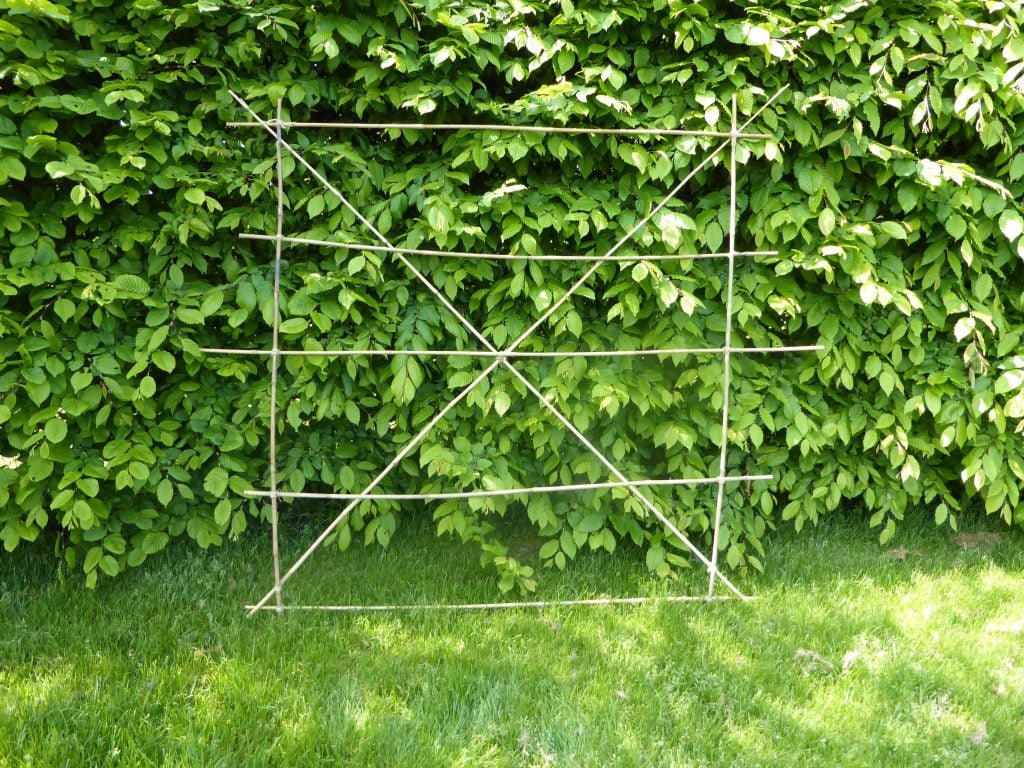
5. Planting and Training the Tree
The most common and popular way to plant a young tree and train the young stems to grow along the structure. If you want to be easy, purchase the plants that are already trained to grow in a certain structure.
Once you choose the structure, install a framework of wires or ropes in the desired pattern and fix the support system firmly with nails, eye bolts or tight knots. Plant the tree a little away, like 15 cm from the wall, to avoid shade and to give space for the plant to grow. Water well and Mulch with organic matter or slow-growing fertilizers available in the market.
After planting, use twines to tie up the branches to the horizontal wires established for the structure. To make it more sustainable, use natural twines like hemp or flax twines.
Leave the stem to grow through the first spring or summer; during the first year, prune the plant heavily to encourage new growth. Cut back the main stem just above the support system and remove the branches that are growing out of the desired pattern.
Tie the new branches that are growing with the twines to promote growth in the desired structure. Prune every year to remove unwanted growth and tie new growth to the support system as it appears. Continue to water, provide nutrients and prune and repeat the same process till you achieve the desired pattern. It is also important to thin the fruits during the first crop season to help the plant avoid damage due to the weight of the fruits.
The process of fruit thinning helps promote fruit size and quality, prevents branch damage, regulates bearing, and also helps in pest management. The whole concept of removing small fruits might sound counterintuitive, but it is important to grow a healthy espalier tree.
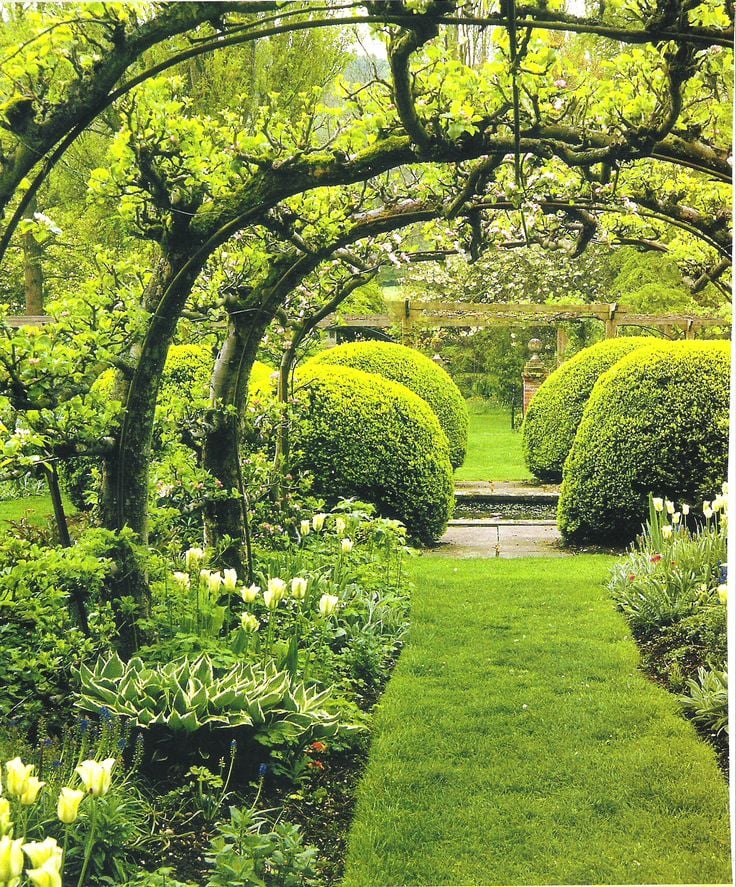
Caring Tips for An Espalier Fruit Tree
When you are growing an Espalier, be patient as these fruit trees take several years to produce fruits and to grow into a desired pattern. Here are a few things to remember while you are at it.
- Water the plant and provide necessary nutrients, as they need more when compared to other trees.
- Prune yours regularly, as they need training to get into the structure.
- Instead of wires or plastic twines, using natural twines to prevent damage, it also promotes an eco-friendly garden.
- Create a strong framework that can sustain heavy breeze and is firmly fixed to tie the branches.
- Espalier fruit trees need well-drained soil; make sure the soil is moist and drains off well.
- Espalier trees require adequate sunlight for healthy growth, and ensure that the tree gets at least 6 to 8 hours of sunlight.
- During winter conditions, protect the tree from frosting and freezing.
- While thinning the fruits, make sure there is enough space between the fruits, and air circulation is good for healthy growth.
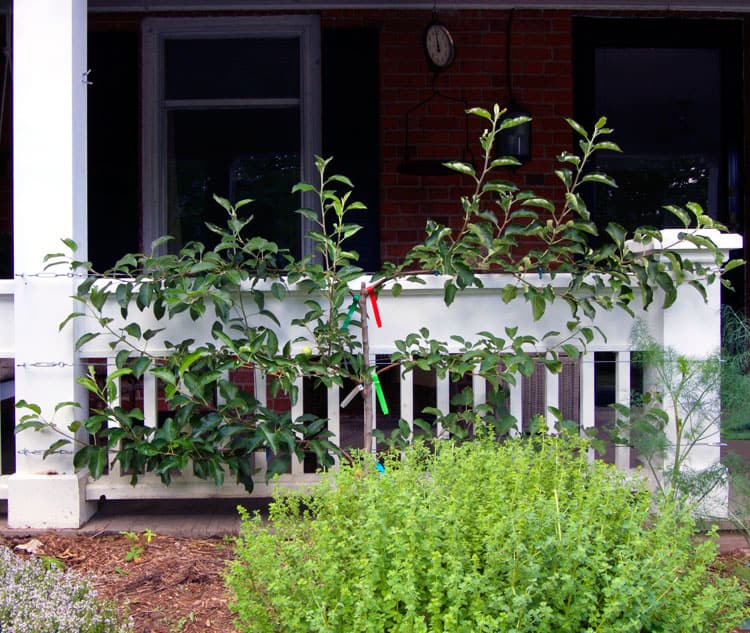
Recent Trends in Espalier Fruit Tree Growth
Over the centuries, this horticulture practice has been known for its artfulness, but there are always new trends to enhance beauty and versatility. Here are some of the recent trends that will help you bring a new and unique look to your garden.
- Creative shapes: Other than traditional horizontal patterns, many new and creative patterns have been developed over the years. These patterns include geometric patterns and serpentine forms that bring out personal attributes and reflect artistic flair.
- Multi-variety Espalier: Have you ever thought of growing different fruits on a single structure? Yes, you can do it! Grafting different varieties onto the same tree results in more than one variety of fruits growing on the same tree.
- Landscaping: Traditionally, Espalier trees are grown to save space and to decorate walls, but using the same technique, you can create beautiful hedges, borders, etc.
- Espaliered Espaliers: Training multiple layers into a single pattern not just yields a heavy crop but also gives a 3-dimensional shape to the structure. The depth and complexity add a unique texture to the wall or fence.
Conclusion
Growing and caring for an Espalier fruit tree is a very fascinating and endearing experience that combines both artistic gardening and producing fruits. In the 17th century or in recent days, the Espalier technique had proved its versatility and adaptability to grow in large or small gardens when properly cared for.
With little effort and patience, you can create a beautiful structure in your garden by following the process and tips discussed in this blog. From maximizing the limited space to growing fruits in enchanting and interesting structures, Espalier fruit trees give an unparalleled experience to the gardener. Other than the training part, these plants have similar needs to other plants, such as healthy and well-set soil, frequent watering, proper drainage system, mulching, and pruning. Make sure you are looking out for pests and diseases.
So, what are you waiting for? Unleash your creativity and create a beautiful pattern that is going to change the whole look of your garden and also help you yield healthy fruits. Happy gardening!

